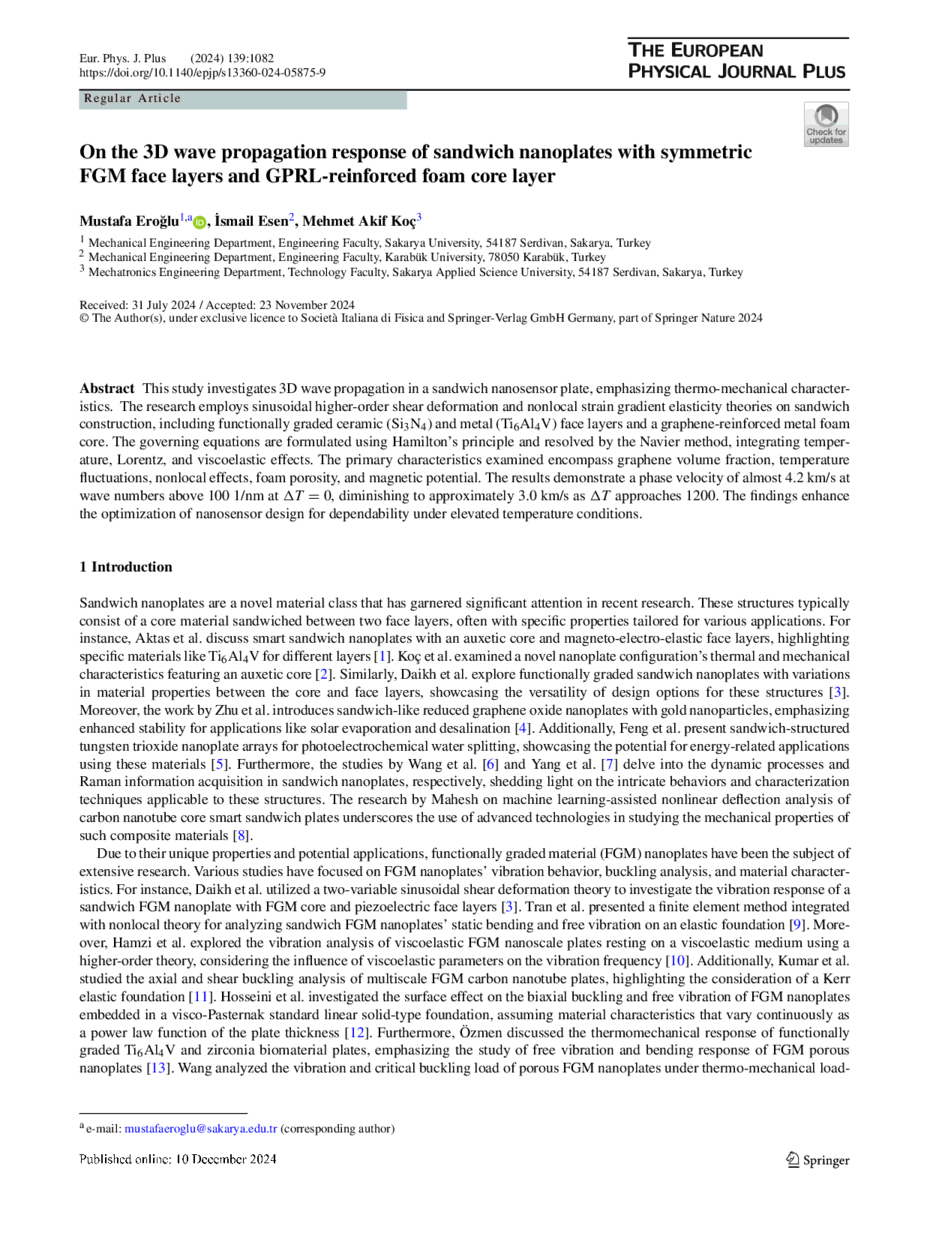https://doi.org/10.1140/epjp/s13360-024-05875-9
Regular Article
On the 3D wave propagation response of sandwich nanoplates with symmetric FGM face layers and GPRL-reinforced foam core layer
1
Mechanical Engineering Department, Engineering Faculty, Sakarya University, 54187, Serdivan, Sakarya, Turkey
2
Mechanical Engineering Department, Engineering Faculty, Karabük University, 78050, Karabük, Turkey
3
Mechatronics Engineering Department, Technology Faculty, Sakarya Applied Science University, 54187, Serdivan, Sakarya, Turkey
a
mustafaeroglu@sakarya.edu.tr
Received:
31
July
2024
Accepted:
23
November
2024
Published online:
10
December
2024
This study investigates 3D wave propagation in a sandwich nanosensor plate, emphasizing thermo-mechanical characteristics. The research employs sinusoidal higher-order shear deformation and nonlocal strain gradient elasticity theories on sandwich construction, including functionally graded ceramic (Si3N4) and metal (Ti6Al4V) face layers and a graphene-reinforced metal foam core. The governing equations are formulated using Hamilton's principle and resolved by the Navier method, integrating temperature, Lorentz, and viscoelastic effects. The primary characteristics examined encompass graphene volume fraction, temperature fluctuations, nonlocal effects, foam porosity, and magnetic potential. The results demonstrate a phase velocity of almost 4.2 km/s at wave numbers above 100 1/nm at ΔT = 0, diminishing to approximately 3.0 km/s as ΔT approaches 1200. The findings enhance the optimization of nanosensor design for dependability under elevated temperature conditions.
Copyright comment Springer Nature or its licensor (e.g. a society or other partner) holds exclusive rights to this article under a publishing agreement with the author(s) or other rightsholder(s); author self-archiving of the accepted manuscript version of this article is solely governed by the terms of such publishing agreement and applicable law.
© The Author(s), under exclusive licence to Società Italiana di Fisica and Springer-Verlag GmbH Germany, part of Springer Nature 2024
Springer Nature or its licensor (e.g. a society or other partner) holds exclusive rights to this article under a publishing agreement with the author(s) or other rightsholder(s); author self-archiving of the accepted manuscript version of this article is solely governed by the terms of such publishing agreement and applicable law.





